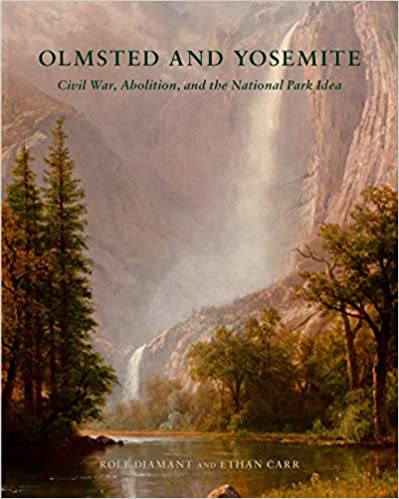
Right on time for the bicentennial of Fredrick Law Olmsted Sr.’s birth comes Olmsted and Yosemite: Civil War. Abolition, and the National Park Idea by Rolf Diamant and Ethan Carr (Library of American NHAs being new model for conservation and a new kind of National Park is an interesting thesis and History 2022). This latest book on Olmsted examines his contributions with an emphasis on park making as a civic value. It provides a concise overview of Olmsted’s career and, most significantly, his central role in creating the idea of public parks, starting with Central Park, and then continuing on to his sojourn in California where he applied his ideas to the future of Yosemite Valley. It delves into his understanding of the emblematic importance of this great idea for the benefit of the people and considers it in the context of the Civil War and the struggle for our republic. The book ties Olmsted’s vision to the establishment of the National Park Service. It places the creation of Yellowstone National Park in 1872 on the continuum of post-war public-spirited legislative initiatives such as homesteading, land grant universities, and Reconstruction.
This is a thoughtful and nuanced treatise that proposes a new origin story for the emergence of the American park movement that changed the face of the United States and influenced international park practice. The authors met their stated goal to examine the development of the broader park idea both before the Civil War and in the ferment of the postwar period framed by the life and career of Olmsted Sr. As a final enticement to readers, the volume includes the full text of Olmsted’s Preliminary Report upon the Yosemite and Big Tree Grove (August 1865). I strongly recommend that anyone with an interest in this topic pick it up and read it.
What about these ground-breaking ideas and parks today? The book’s introduction identifies three landscapes which are linked to Olmsted’s ideas of civic good: Central Park, Port Royal, and Yosemite. So, what has been their fate? Central Park has been revitalized, in part by a strong citizen led conservancy, and is now on the United States tentative list for World Heritage designation. Yosemite National Park is one of the crown jewels of the National Park System with almost 5 million visitors a year. It is so crowded that a reservation system has been instituted for 2022. As for the National Parks Service, the agency is wildly popular although seriously underfunded.
What happened to the landscape of the Port Royal experiment in coastal South Carolina is a different story. This region was the site of transformative attempts to grapple with the need to integrate millions of newly freed African Americans into social, political, economic, and labor systems. Despite its national significance, until recently this place and its history were ignored by many. One step in the right direction was the designation in 2007 of a much larger landscape, the Gullah Geechee Cultural Heritage Corridor. (See the article Keeping the Promise in the Living Landscape Observer). After years of effort, the Reconstruction Era National Historical Park was established in 2017. The authors of Olmsted and Yosemite provide some clues as to the reasons for this delay. They pointed to the need for the NPS interest to avoid “controversy” in order to gain the support of powerful Southern legislators both in the formation of the Service and to secure longer term support. One of the authors commented in a recent interview that the topic of Reconstruction used to be the third rail in the Park Service. With the cultural heritage corridor and the historical park now receiving national recognition, this is another win for the idea of parks as civic infrastructure. These sites now face the usual struggles of other newly created sites, especially cultural sites, to be adequately staffed and funded. This lack of resources needs to be addressed , but that is for the future.



One Response
knew nothing about Olmsted and Yosemite. Need to do some reading. Thanks, Brenda.